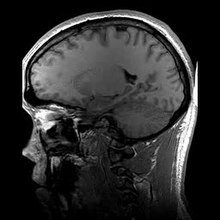Week 4: Medical Technology and Art
 Art and medicine, insofar as they seek to understand and portray the human body, have shared an intimate relationship as they've evolved over the years. The flourishing of art and the beginnings of medicine, for example, both occur in Renaissance Italy. This is evident through the writings of Andreas Visalius, who created a detailed anthology of human anatomy during the Renaissance, to Leonardo da Vinci, who used his dissection of cadavers to create anatomically accurate artwork that remain quintessential examples of Renaissance art to this day. I was especially surprised to see in the reading that within the Hippocratic oath itself, it is acknowledged that "there is art to medicine as well as science." In this sense, doctors understand and embrace the co-dependence of art and medicine.
Art and medicine, insofar as they seek to understand and portray the human body, have shared an intimate relationship as they've evolved over the years. The flourishing of art and the beginnings of medicine, for example, both occur in Renaissance Italy. This is evident through the writings of Andreas Visalius, who created a detailed anthology of human anatomy during the Renaissance, to Leonardo da Vinci, who used his dissection of cadavers to create anatomically accurate artwork that remain quintessential examples of Renaissance art to this day. I was especially surprised to see in the reading that within the Hippocratic oath itself, it is acknowledged that "there is art to medicine as well as science." In this sense, doctors understand and embrace the co-dependence of art and medicine. I was surprised by how much contemporary art is influenced and informed by medicinal advances and our increased capability to map and analyze the human body. I found especially interesting the relevance of MRIs in informing artistic initiatives, as Silvia Casini describes in her paper. Casini writes that it's not only the visual aspects of MRI that can inform artwork, but the acoustical processes involved with mapping the body. While I personally have a difficult time envisioning how to incorporate the acoustical aspects of MRI imaging into artwork, it makes sense that art which makes use of multiple senses can elevate the artistic experience.
I was surprised by how much contemporary art is influenced and informed by medicinal advances and our increased capability to map and analyze the human body. I found especially interesting the relevance of MRIs in informing artistic initiatives, as Silvia Casini describes in her paper. Casini writes that it's not only the visual aspects of MRI that can inform artwork, but the acoustical processes involved with mapping the body. While I personally have a difficult time envisioning how to incorporate the acoustical aspects of MRI imaging into artwork, it makes sense that art which makes use of multiple senses can elevate the artistic experience.Sources:
“Corporeal Garden.” Virgil Wong, virgilwong.com/art/.
uconlineprogram. “Medicine pt1.” YouTube, YouTube, 21 Apr. 2012, www.youtube.com/watch?time_continue=244&v=Ep0M2bOM9Tk.
Tyson, Peter. “The Hippocratic Oath Today.” PBS, Public Broadcasting Service, 27 Mar. 2001, www.pbs.org/wgbh/nova/body/hippocratic-oath-today.html.
Casini, Silvia. “Magnetic Resonance Imaging (MRI) as Mirror and Portrait: MRI Configurations between Science and the Arts.” Ca’ Foscari Università Di Venezia.
TEDxTalks. “TEDxAmericanRiviera - Diane Gromala - Curative Powers of Wet, Raw Beauty.”YouTube, YouTube, 7 Dec. 2011, www.youtube.com/watch?time_continue=2&v=cRdarMz--Pw


Hello David,
ReplyDeleteI found your blog to be very interesting, we both had similar views on this weeks topic but at the same time different views. I also found It very interesting how the Hippocratic Oath states both art and since correlate with each other. Another view that I also thought was interesting was the correlation between MRI a huge medical advancement also being seen as art. All in all this weeks topic about art and medicine was very interesting. It gave me a new view on medicine and art. With my new perspective, I am starting to view the human body as a form of art since it is so complex and works perfectly together.